Vincent van Gogh in South France: Arles & St Remy

Van Gogh had initially travelled to the South of France from Paris in the hope of improving his health (which was deteriorating from too much alcohol and smoking) and to establish a "studio in the South" for fellow artists to produce artwork which could be sold by his brother Theo van Gogh back in Paris.
This period of his life was extremely productive and helped to establish van Gogh's reputation as a Master. Whilst it is often claimed that van Gogh never sold a single painting during his lifetime and he died penniless, this is not entirely true. Yes, he lived in abject poverty for most of his life (living off the generosity of his brother, Theo); he did sell one painting, the Red Vineyard in Arles for about $1800 in today's money. In fact, 7 paintings from his time in Arles and Saint Remy have collectively sold for $770m.
Van Gogh Yellow House in Arles, South France
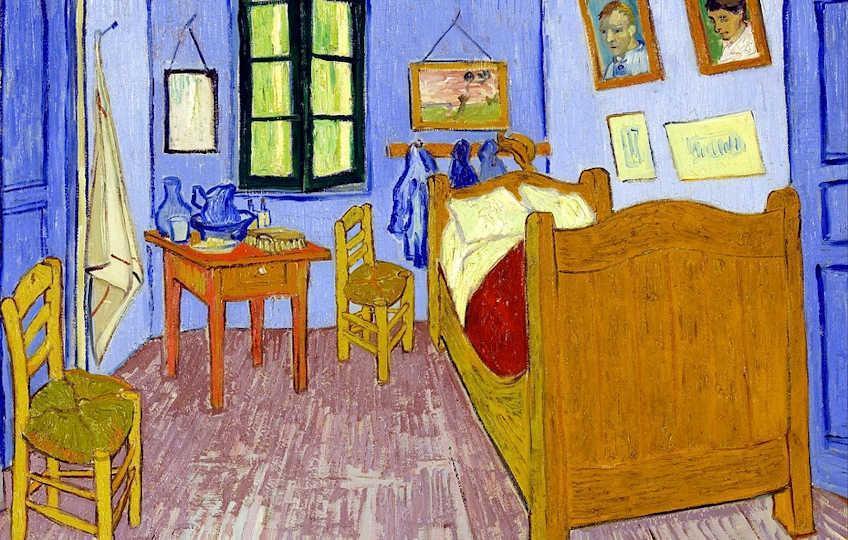
Vincent van Gogh Arles France
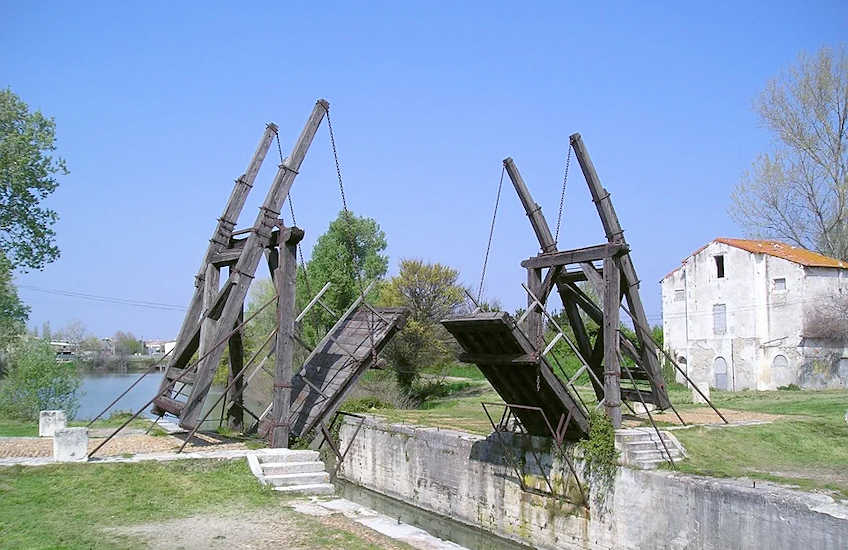 Vincent van Gogh's 'Bridge in Arles' today
Vincent van Gogh's 'Bridge in Arles' today
Van Gogh's period in Arles is regarded as his most prolific. During the 12 months van Gogh stayed in Arles, he produced an incredible 187 paintings and drawings. Whilst some were often duplicates or variations of the same theme (with varying degrees of quality), he did produce some of his famous masterpieces including: The Sower, Bedroom in Arles, The Night Cafe, The Café Terrace on the Place du Forum, Starry Night over the Rhone, Vase with 12 Sunflowers, Van Gogh's Chair and Self-portrait with Bandaged Ear. Van Gogh also visited the nearby countryside and villages, including Tarascon, Saintes Maries and Montpellier.
In October, van Gogh was joined by Paul Gauguin and they started to form their famous partnership. In truth, the relationship between van Gogh and Gauguin was always a bit fraught and not the true friendship that van Gogh had hoped for. Van Gogh had been introduced to Paul Gauguin by his art dealer brother, Theo van Gogh, and there is some evidence that Gauguin had to be 'encouraged' by Theo van Gogh to join his brother in Arles.
Arles van Gogh & Gauguin
It is clear that whilst this period of 3 months in Arles was extremely productive for both painters (together they produced around 80 paintings), their relationship gradually deteriorated caused in part by too much drinking, as well as their different temperaments coming to the fore.
Van Gogh (from the evidence of his letters from this period) seems to have been wracked by feelings of self-doubt and inferiority; and Gauguin comes across as arrogant and over-bearing. So in short it was a bit of a fateful combination. Although nobody can know for certain, it seems that catalyst for the famous ear-cutting incident was that van Gogh found out that Gauguin was planning to leave Arles to return to Paris.
There is conflicting evidence about whether van Gogh did actually cut off his whole ear, with most accounts reporting that it was only the left ear lobe. But what cannot be disputed, is that the local residents of Arles thought he was completely mad (often referred to as the Red Mad Man). Initially van Gogh was taken to the hospital in Arles, but he was later brought to the asylum in nearby Saint Remy de Provence.
Van Gogh in Saint Remy de Provence
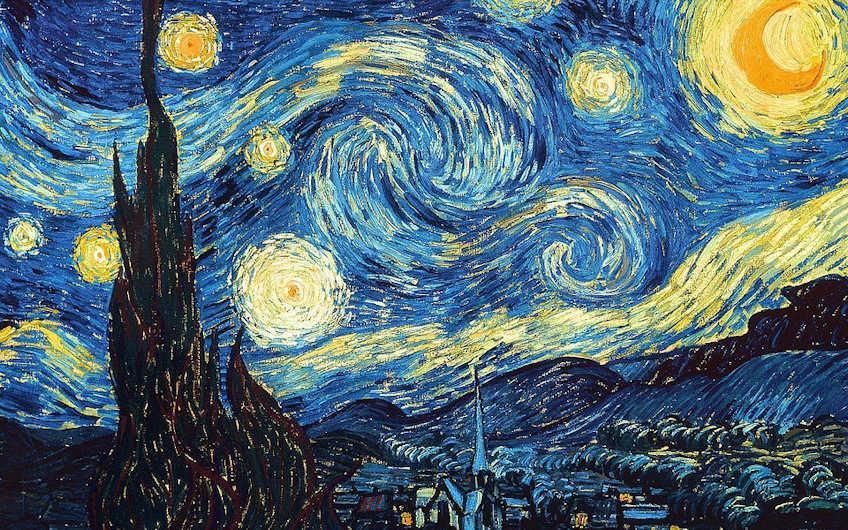 Vincent Van Gogh stayed in Arles for one year. He was brought to the asylum in St Remy by a priest and his carer. At the asylum, van Gogh was given 2 rooms, one of which he used as his studio. Despite suffering from debilitating depression and hallucinations, he still remained productive during this period. He produced his famous Starry Night, The Wheat Field, The Round of Prisoners and Two Peasant Women Digging in a Snow-Covered Field at Sunset.
Vincent Van Gogh stayed in Arles for one year. He was brought to the asylum in St Remy by a priest and his carer. At the asylum, van Gogh was given 2 rooms, one of which he used as his studio. Despite suffering from debilitating depression and hallucinations, he still remained productive during this period. He produced his famous Starry Night, The Wheat Field, The Round of Prisoners and Two Peasant Women Digging in a Snow-Covered Field at Sunset.
Many have speculated about the exact cause of van Gogh's mental condition, but it seems that the consensus is that he suffered from bi-polar disorder. At the hospital in Arles he was diagnosed as suffering from epilepsy and recent studies have confirmed that his delirium was certainly not helped by his use of lead in his painting oils.
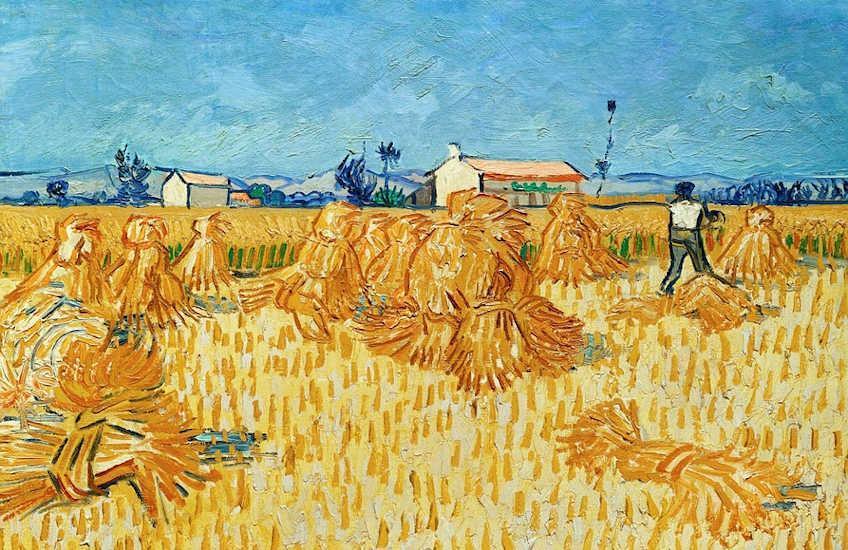
Van Gogh's movements around St Remy were naturally quite restricted, but on his supervised walks around the hospital gardens he began to make studies of the Lilacs and Irises, as well as the Cypress and Olive trees, all of which featured in a number of paintings during this period. During February and April 1890, van Gogh suffered a relapse in his condition and in May 1890 he was transferred to Auvers-sur-Oise, near Paris, under the care of Dr Paul Gachet (whose portrait he famously painted and which was sold 110 years later for a reputed $82m).
It is quite amazing that 3 of the paintings that Vincent van Gogh produced in between his bouts of depression and epileptic fits, have today sold for a combined value of $157m (A Wheatfield with Cypresses, 1889 ($57m); Peasant Woman Against a Background of Wheat, 1890 ($47m); and Irises 1889 ($53m)). Today, you can join a guided tour of the St Remy asylum where van Gogh stayed and to explore the gardens which featured heavily in his paintings.
Arles tourism South France
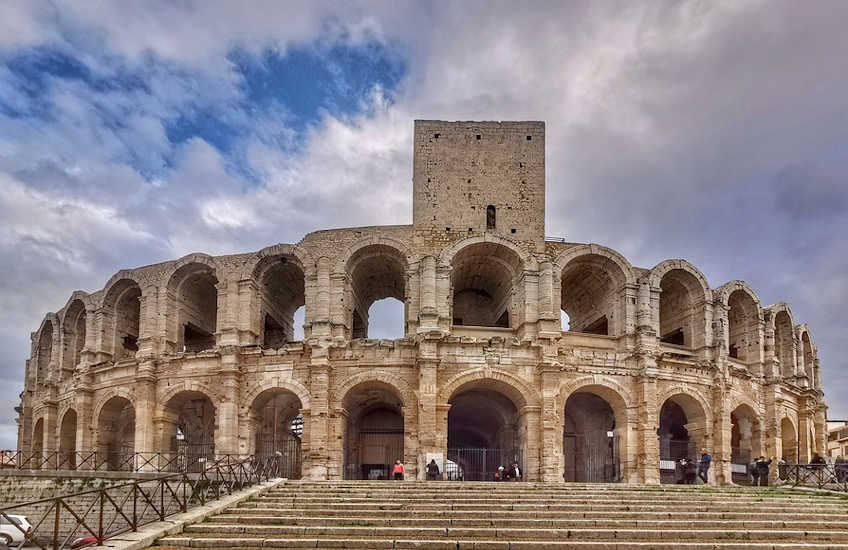 The city of Arles in South France is widely regarded as the heart of Provence. It is an excellent little city, with beautiful 18th and 19th century Mansion houses and old Roman buildings. Arles is bisected by the wide River Rhone, with one major bridge across (Pont de Triquetaille).
The city of Arles in South France is widely regarded as the heart of Provence. It is an excellent little city, with beautiful 18th and 19th century Mansion houses and old Roman buildings. Arles is bisected by the wide River Rhone, with one major bridge across (Pont de Triquetaille).
In the height of summer Arles is absolutely awash with visitors and all the pavement cafes and restaurants create a lively atmosphere. I recently visited in late March and it was still very busy. It only takes about 20 minutes to walk from one side of Arles to the other.
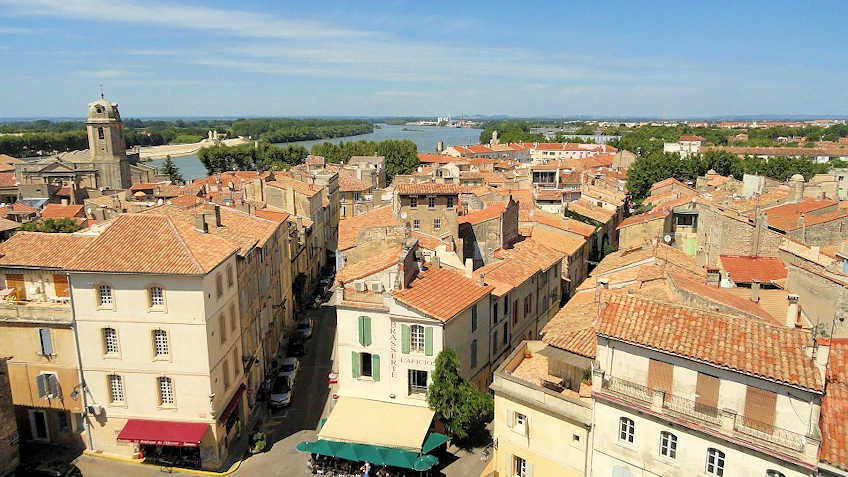
In the centre of Arles there is the imposing square of the Place de la Republique. The square is ringed by several impressive buildings such as the Archbishop's Palace, the Hotel de Ville and the Cathederale de St Trophime. In the centre is a giant obelisk brought here from the site of the Roman Circus.
Throughout the square are placed 49 statues and brass plates depicting the symbol of Arles - the Lion. This symbol is borrowed from the emblem of the Roman VI Legion that was once stationed here under Emperor Caesar.
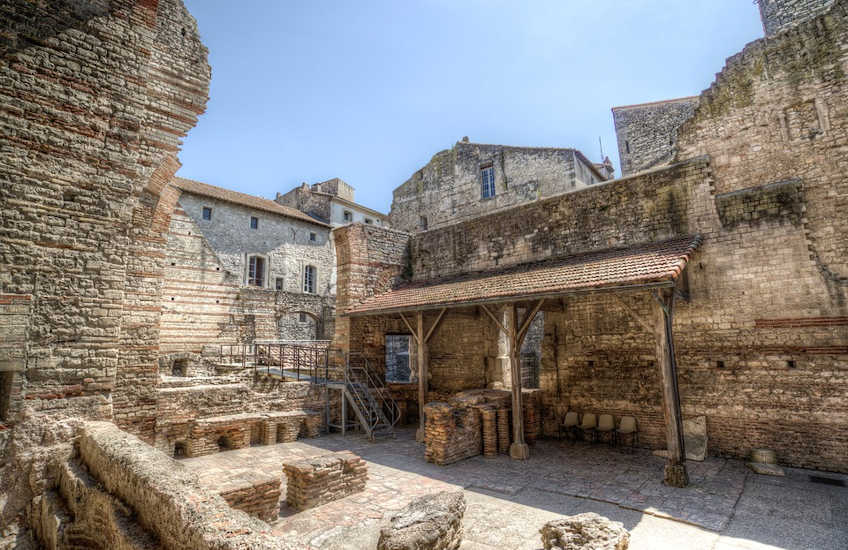
Although Arles was first settled by the Greeks, it was really under the Romans that it prospered. In 43BC the town sided with Julius Caesar over his rival Pompey (supported by nearby Marseille). As a result, when Caesar became Emperor, Arles was rewarded with magnificent gifts such as theatres, circus, baths and a forum.
Arles also has a fantastic Roman amphitheatre. Today it can still seat 12,000 people, although in its heyday it could seat around 22,000 to watch gladiator combats and mock naval battles. After the Romans left, the site was used as a fortress by the Barbarians.
Arles tourist attractions - Musee Reattu
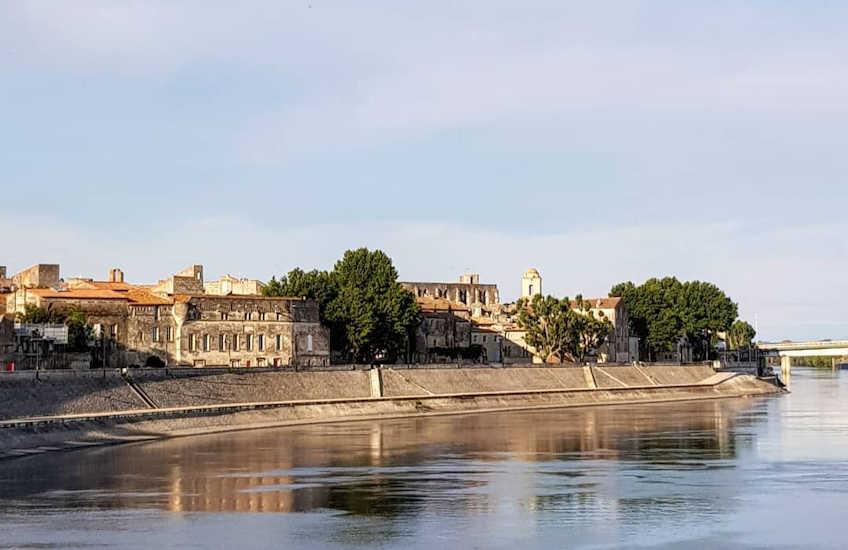
Musee Reattu on the banks of the Rhone is a little museum featuring important works by Picasso and the 18th century artist Jacques Reattu. Apparently, Picasso was horrified to discover that despite van Gogh's close association with Arles, the town did not possess a single one of his paintings. To make amends he donated a significant number of drawings.
Since that time the Museum has obtained a number of van Gogh's letters to his brother, Theo van Gogh.
Arles tourist information - Espace Van Gogh
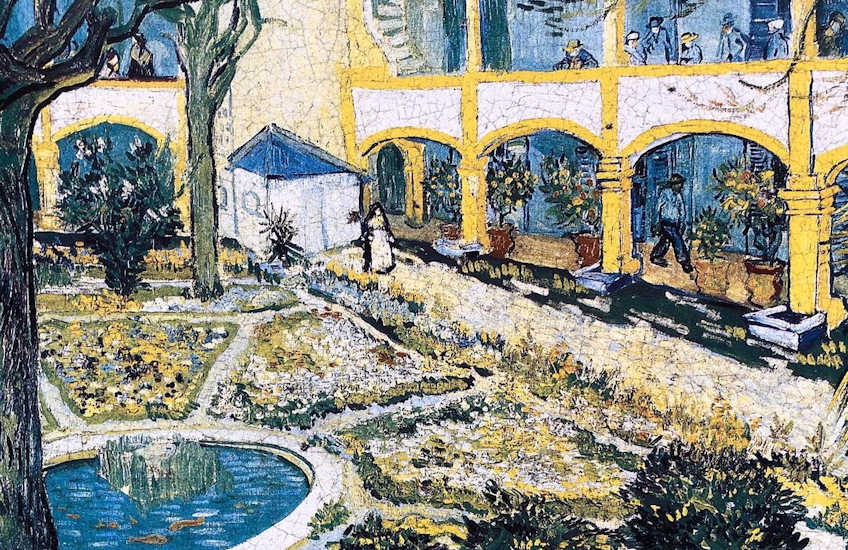
Espace van Gogh is located on the original site of the old hospital in Arles, where van Gogh spent time after he cut off his ear. It was immortalised in his painting Hopital d'Arles. Today the hospital has been converted into an open space with gardens, together with artist studios and small exhibition galleries.
It is well worth a visit and you will get a good view of one of his famous paintings. The scenery has changed a bit, but you can still recognise the garden and hospital from the painting.
Arles Luma tower - Frank Gehry
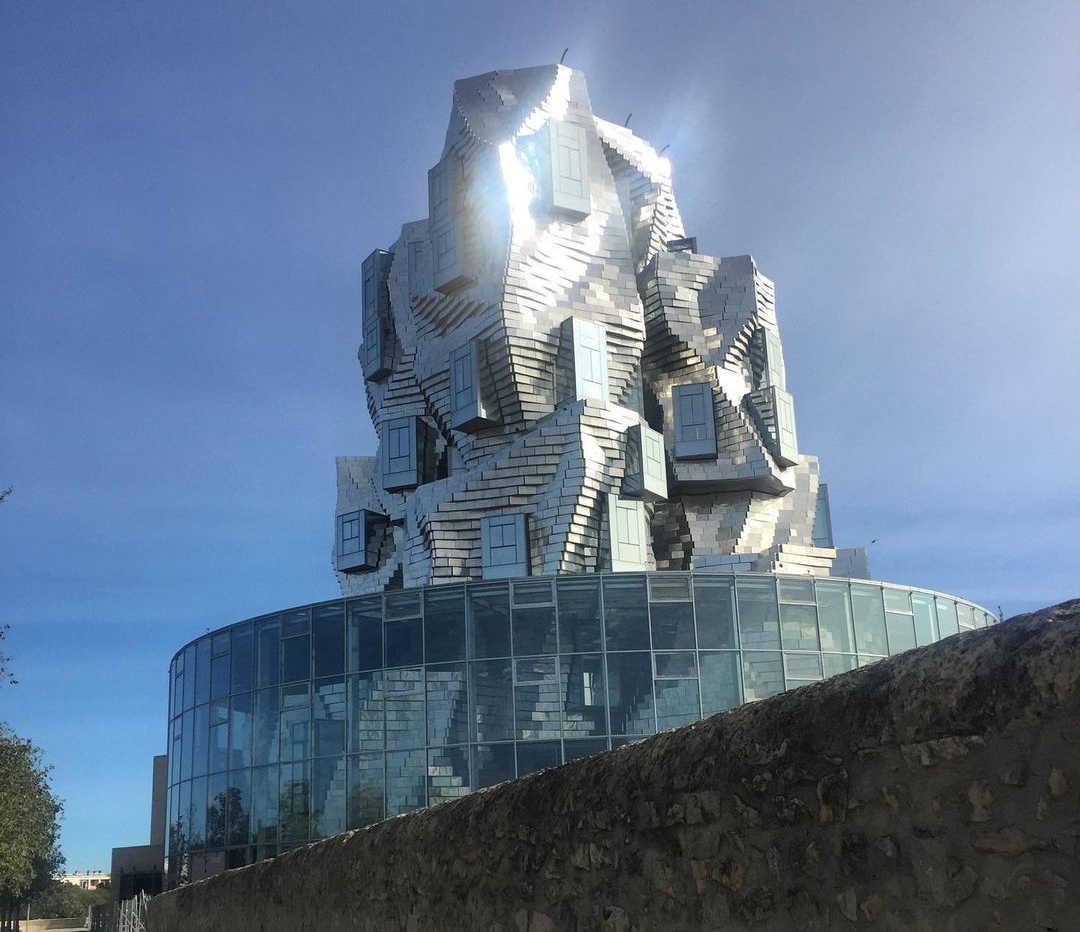
A new addition to the skyline of Arles, is the striking Luma Arles tower, designed by the celebrated architect, Frank Gehry. This amazing tower is made from 11,000 blocks of stainless steel and is the centre-piece of a 16-acre art-complex built on the site of the Parc des Arteliers, a former railway workshop and industrial site in Arles, France.
Luma Arles is the brain child of Maja Hoffmann, a Swiss art collector, documentary filmmaker and entrepreneur. Luma Arles will operate as a contemporary arts centre where artists, researchers, and creators from diverse fields will work and collaborate on exhibitions and projects. At the centre of Luma Arles, Gehry's 56 metre tall tower will house a wide range of programs including research facilities, workshops, seminar rooms, and artist studios. At tower's base, there will be a large glass atrium that can be open to the general public. The overall campus is privately funded by Maja Hoffmann's Luma Foundation and it is expected to cost around $175M in total.
If you love art or history then Arles in South France is definitely a place worth visiting. The combination of Roman artefacts and the scenes of van Gogh's paintings are enough to draw you to this beautiful city and keep you in Arles for the whole day.
Arles is small enough to get yourself around and all the sites are conveniently located. Arles is also situated on the edge of the Camargue, which is a beautiful area of natural beauty.
